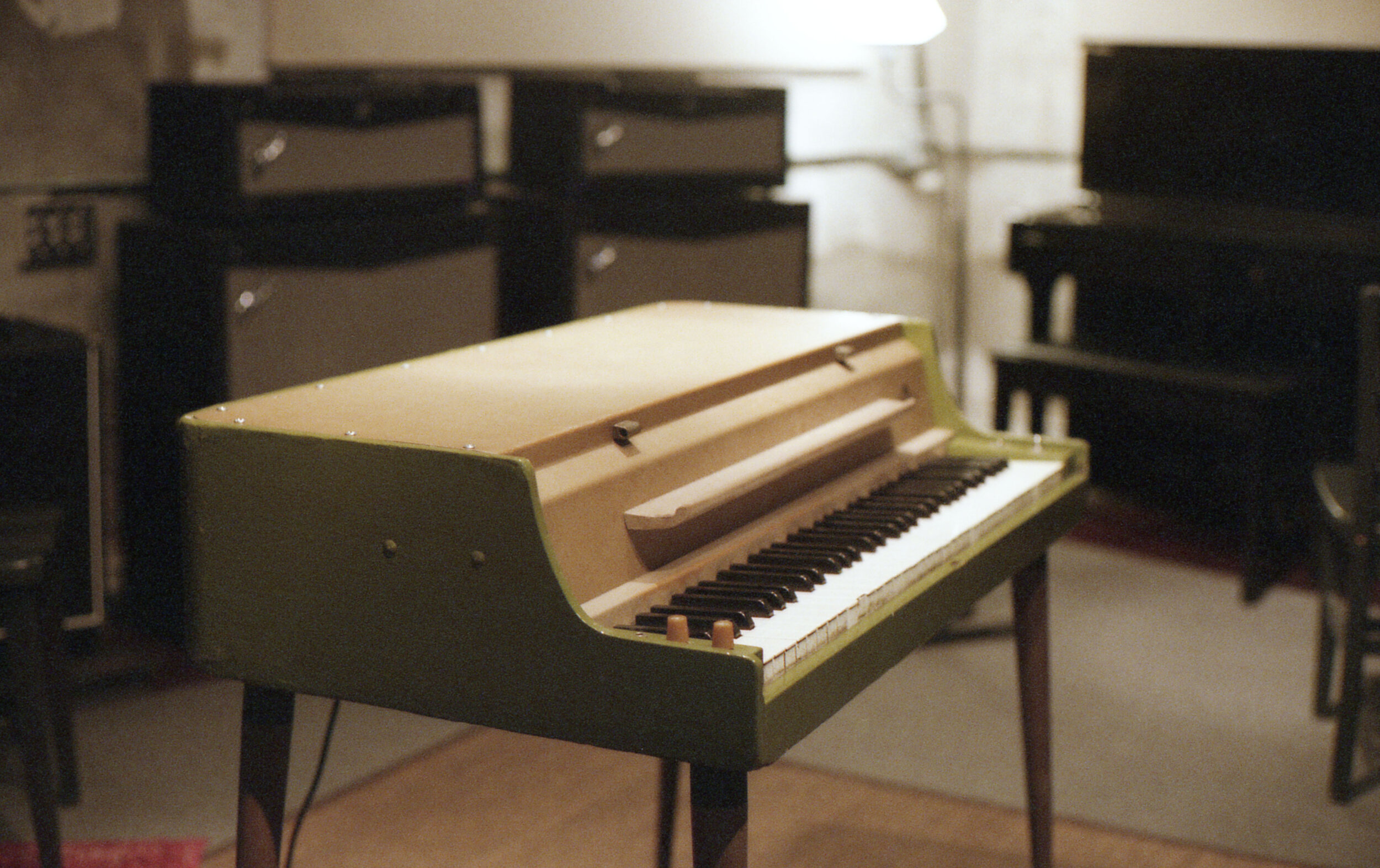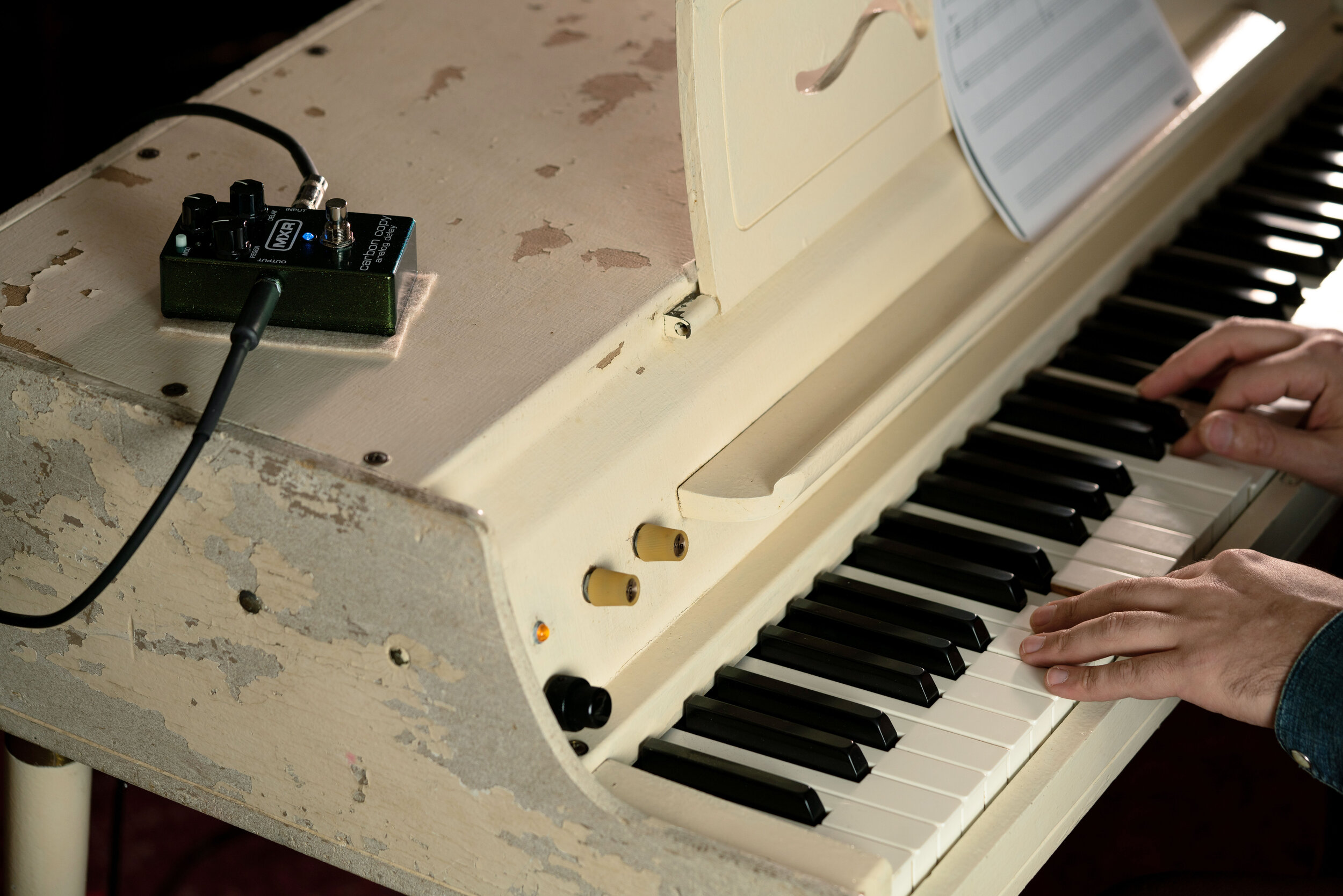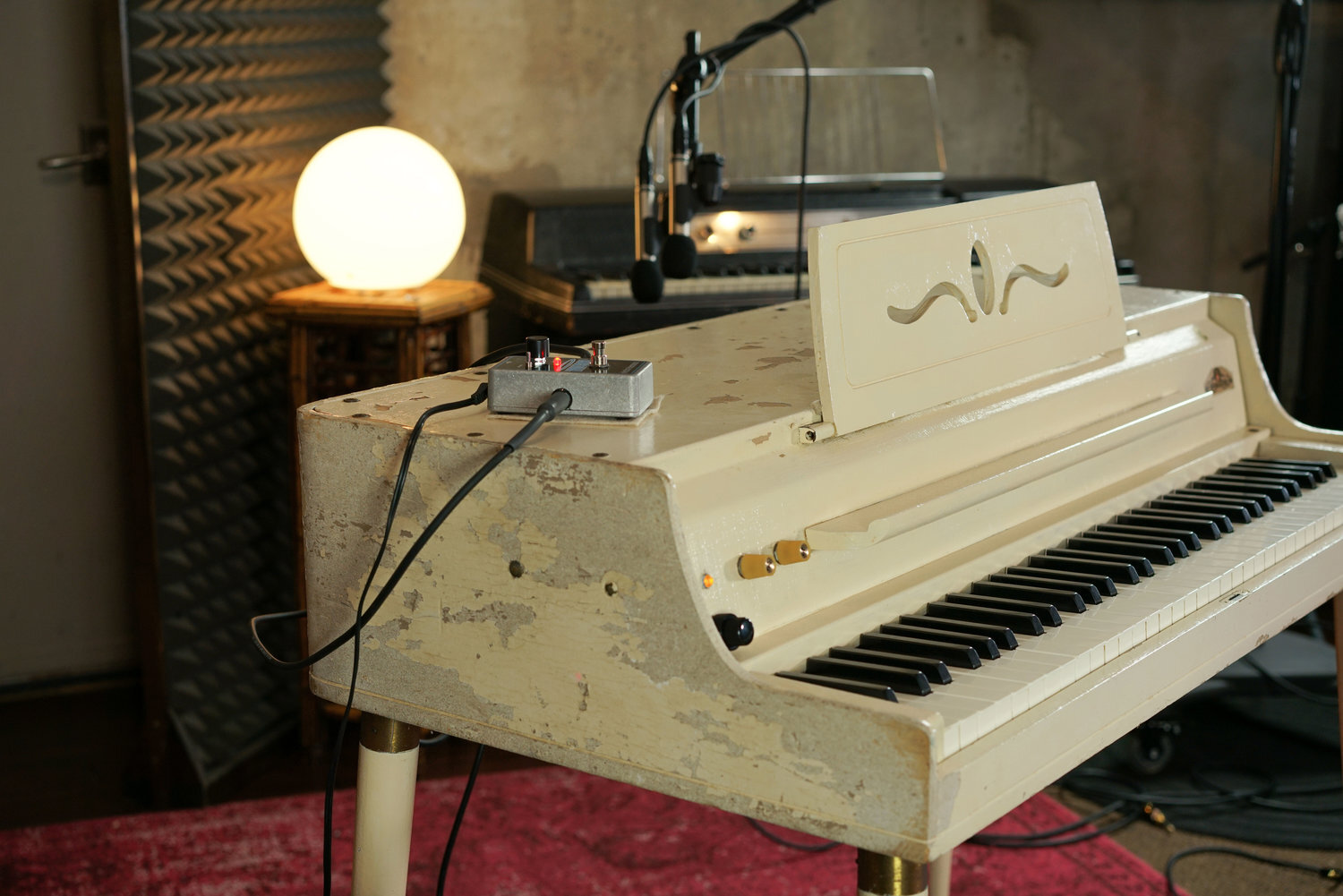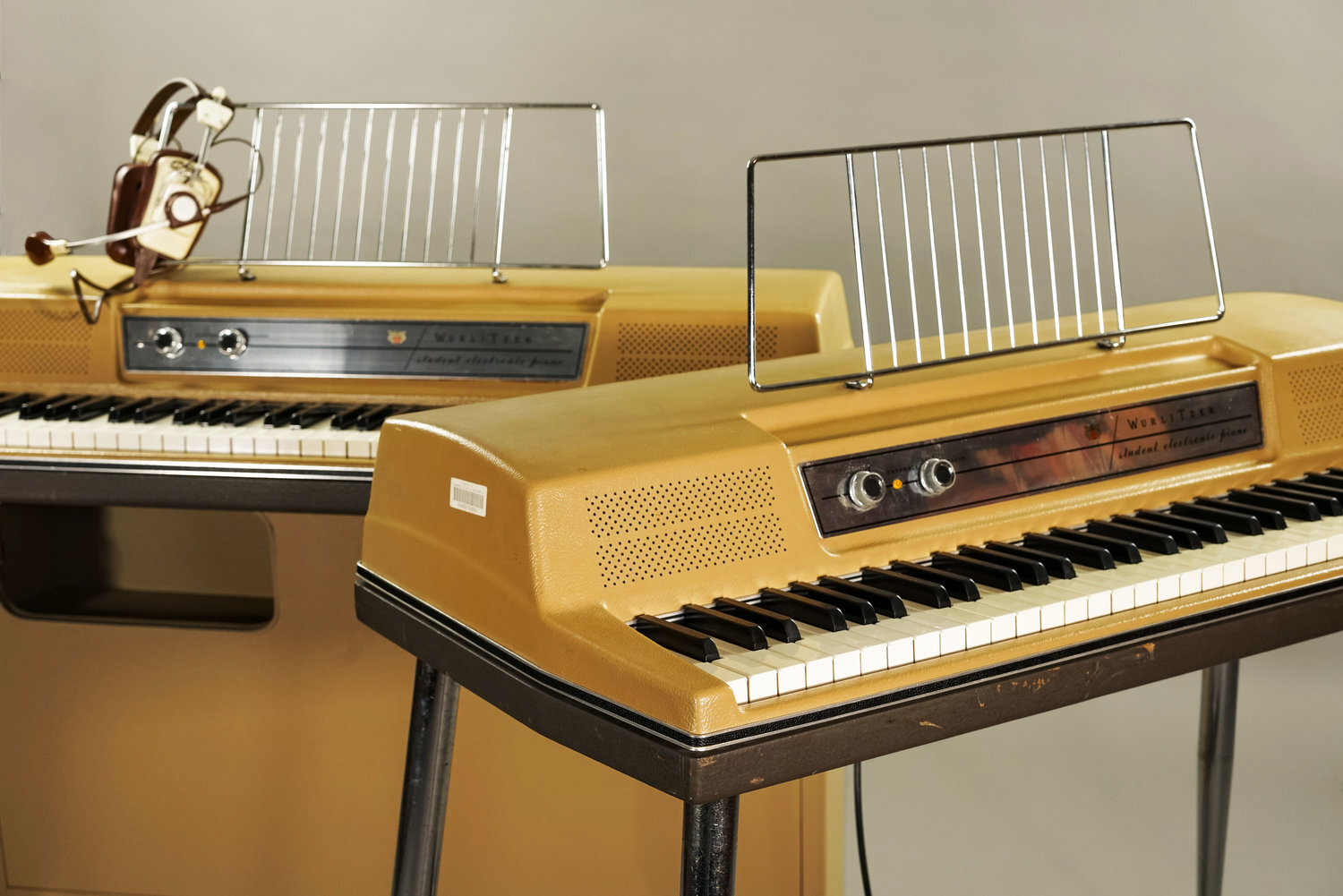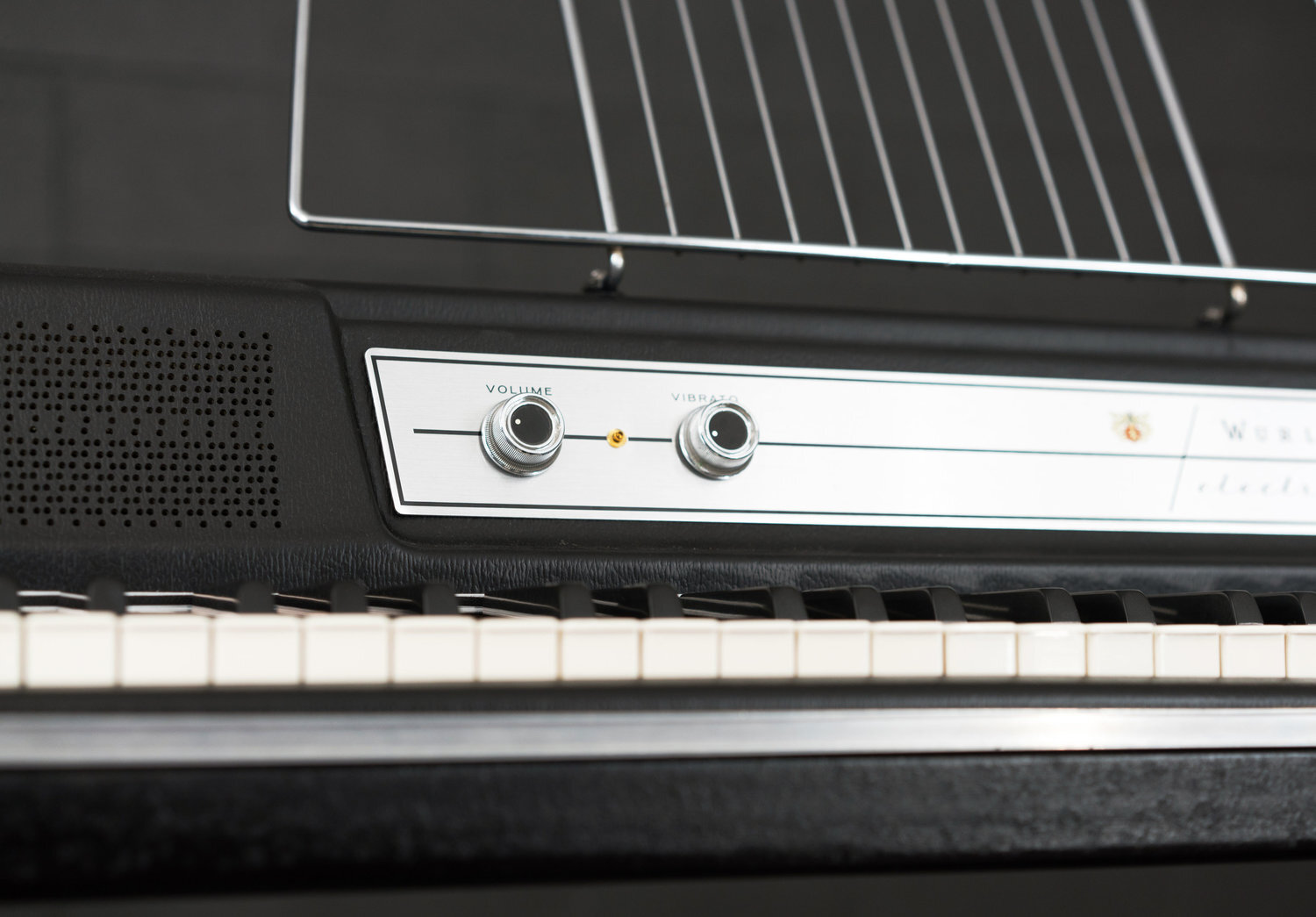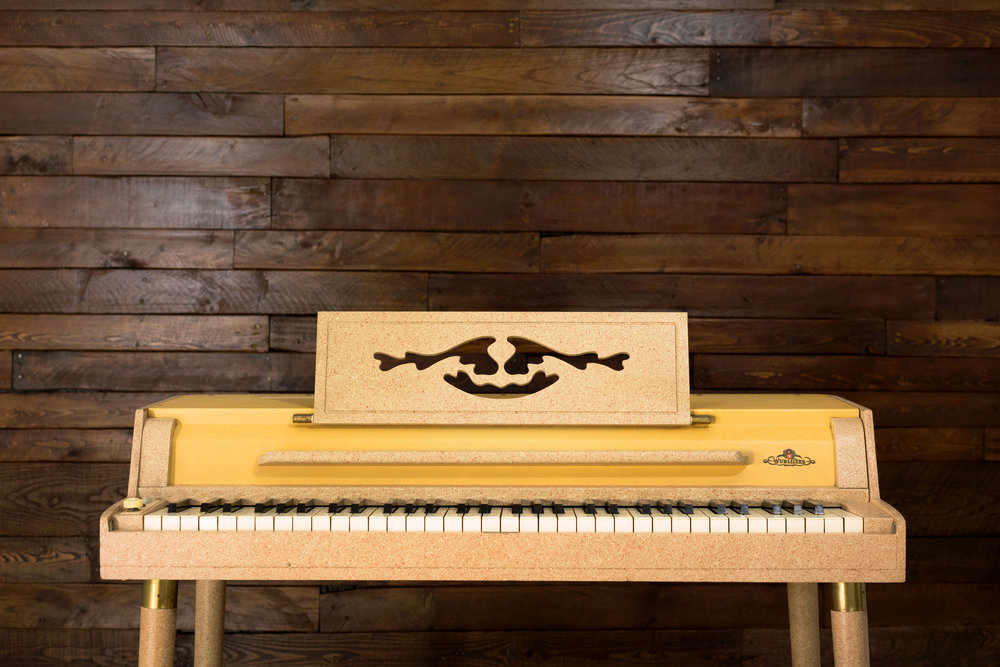What is the difference between a Wurlitzer 140 or 140b and a Wurlitzer 145?
An example of a Wurlitzer 140b that we restored.
The only true difference between 140-series and 145-series Wurlitzers is the amplifier. Both keyboards were released in the 1960s and represented a total redesign of the Wurlitzer electronic piano. Wurlitzer overhauled the mechanical action, revised the cabinet, and — for the first and only time — manufactured two parallel styles of amplifier: a solid state amp (the 140/140a/140b) and a tube amp (the 145).[1]
The solid state amplifier went through several revisions, while the 145 remained pretty much the same throughout its run. This reflects the fact that transistors were a relatively new invention subject to fast-paced changes in the state of the art, while tube amplifiers were an established technology. The 140 was the first solid-state Wurlitzer amp, followed by a slight revision (the 140a), and then a more significant revision (the 140b). Although the 145 amplifier stayed pretty much the same throughout the 1960s, the mechanical portion of the keyboard was subject to the same revisions as its 140 cousins. So, although you may see the 145, 145a, or 145b, note that any significant differences from model to model exist only in the mechanical action.[2]
Why did Wurlitzer release two parallel amplifiers? Probably to appeal to as many consumers as possible. During the 1960s, solid state electronics were in their infancy. Transistors were certainly an exciting new technology, but tubes were still considered more powerful and more practical. Offering both a tube and transistor option certainly allowed Wurlitzer to appeal to more traditional consumers, as well as those more interested in the newest technology.
“The argument has been set forth that transistors will replace vacuum tubes. That may or not be the case.”
A 145. Note that it is cosmetically identical (except for the vintage green paint job, of course) to the 140b above.
Eventually, Wurlitzer opted to abandon the tube version altogether and focus entirely on their solid state offerings. In the late 1960s, the 140b and the 145 were discontinued, and the solid-state (and all-silicon) Wurlitzer 200 was released instead. This is understandable. Solid state amps run cooler, use smaller components, and require less labor-intensive assembly. The 200 was smaller and significantly lighter than its predecessors; its amplifier could be mounted above the keys.
In fact, the negative features of the 140 and 145 amplifiers are only obvious today, in light of the more efficient, modern transistor technology. At the time, 140 and 145 keyboards were actually a vast improvement in playability over the 120/700. (They also included tremolo — although that feature, according to 1950s patent applications, had been on Wurlitzer engineers’ wishlists since the release of the 112.) However, compared to today’s silicon transistors, the 140 had much to be desired. The germanium power transistors are leaky; the selenium rectifier tends to fail spectacularly; the small-signal transistors have excessively large tolerances — all things that would be a deal-breaker in today’s gear, but were normal and almost expected in the mid-1960s.
In contrast to the 140b, the 145 amplifier was hot, expensive, and used an elaborate point-to-point wiring system. Its components crowd the chassis. In fact, the 145 was quickly discontinued: the last 145 was manufactured several years before the last 140b. For this reason, the 145 is one of the rarest Wurlitzers.
This is an earlier 145. Its controls are mounted in the lid, like those in the 140a.
What were some downsides to transistors at the time? Early transistors were not very powerful, so amplifiers used various compensation strategies in order to ensure that their output would be comparable to that of a tube amp. One of these was the widespread use of transformers for interstage impedance matching. All 140 model have a small transformer mounted inside the chassis for this purpose. This transformer — the driver transformer — provides phase inversion as well as the most efficient power transfer between driver and output transistors (at the time, at least). Later amplifiers such as the Wurlitzer 200 use a couple more gain stages and beefier driver transistors (as well as an alternative form of phase inversion), eliminating the need for a transformer in this position at all. However, neither the 140 nor the 200 require an output transformer, because the output transistors alone are enough to achieve the low output impedance and high currents required to drive a directly-coupled speaker.
The interior of a Wurlitzer 140b amplifier. Note the driver transformer.
Another weakness of 1960s-era transistors: they were extremely susceptible to heat. Tubes get very hot, of course, but they aren’t sensitive to heat in the same way that transistors are. Excessive heat can easily destroy a transistor, so they must be mounted on an adequate heat sink. Additionally, relatively small changes in ambient temperature can affect the transistor’s operating characteristics to the point that the circuit will no longer function as designed. To that end, the 140 and 140a relied on thermistors — a component whose resistance changes with the temperature — in the driver transistor’s bias circuit.
However, even early transistors had a few upsides. Even in the 1960s, transistors were incredibly small — a fraction of the size of tubes. Adding tremolo to the 140/140a/140b was trivial: it was powered by a couple of tiny transistors. On the other hand, adding tremolo to the 145 meant using an oddball three-triode preamp tube.
Transistors also require less supply voltage, which means a smaller power transformer. because they have no heater circuit, they do not require a 6.3v transformer tap. Eliminating the heat also means eliminating a potential source of heat and noise.
Which amplifier is better? In working condition, all 1960s Wurlitzer amps sound pretty great. The 145 has classic tube amp warmth, as well as a unique character, thanks to the 7868 power tubes. If you are a tube amp purist, you should know that the 145 is the only tube-powered Wurlitzer that has tremolo.
However, the solid state 140 amps are also very unique, and have a sound that is unlike later solid state circuits. Because germanium transistors do not operate as perfectly as silicon (i.e., modern) transistors, 140/140a/140b amplifiers have an unusual tube-like warmth.
Unfortunately, all of these amplifiers have hard-to-find components inside. The compaction 6K11 tube in a 145 is no longer produced. If that tube wears out, you must replace it with a NOS (or, lacking that, just a plain old-stock) 6K11. You may need to test several 6K11s in order to find one that performs to your standards. (See the Note on Tube Testers in this article.)
A collection of compactron tubes. Compactron tubes were a short-lived 12-pin varietal, most of which had two or three sections to combine multiple triodes and pentodes in one glass envelope.
Likewise, germanium transistors are no longer made, and NOS transistors are becoming increasingly hard to find. It is often possible to replace germanium transistors with new silicon transistors, but the circuit will need to be re-biased (and, obviously, you will lose that unique germanium tone).
If you have a working 145 or 140-series amplifier, you should consider it a tonally valuable — and maybe even ephemeral — piece of gear. Hopefully, you are recording with it often! Parts for these amplifiers are finite resources. There will be a day in the future when the sound of an un-modified 1960s Wurlitzer amp only exists in recordings and memories. Whether your recordings are rough drafts or studio-quality final mixes, they could be important evidence of the tonal qualities of these important amplifiers from the golden age of gear.
[1] It should be mentioned that there was also a console version of the 140/145 keyboards. Console versions are the Wurlitzer 720a, 720b, and 726. They all have a wooden cabinet that resembles a traditional spinet piano. The 720a is the tube version (equivalent to the 145), the 720b is the solid-state version (equivalent to the 140b), and the 726 is the student version (same as the 140b, but with hardwired headphones and the tremolo has been disconnected — in fact, the 140b version is the 146, and it is in a portable 140b cabinet).
[2] Mechanical changes across 140- and 145-series models are pretty minor. Certain reeds in early 140 Wurlitzers are different. Length of dampers may also be different, depending on the year. Otherwise, the mechanical action is very similar to the 200 series. Steve Espinola has documented the differences across the 140 series on his website here.
Further Reading
Browse all of our articles on restoring vintage gear. Or, click on an image below.


